1. Ukiyoe that Challenges: Kuniyoshi, Yoshitoshi ... and More!
国芳から芳年へ挑む浮世絵
Through June 6
Koriyama, Fukushima
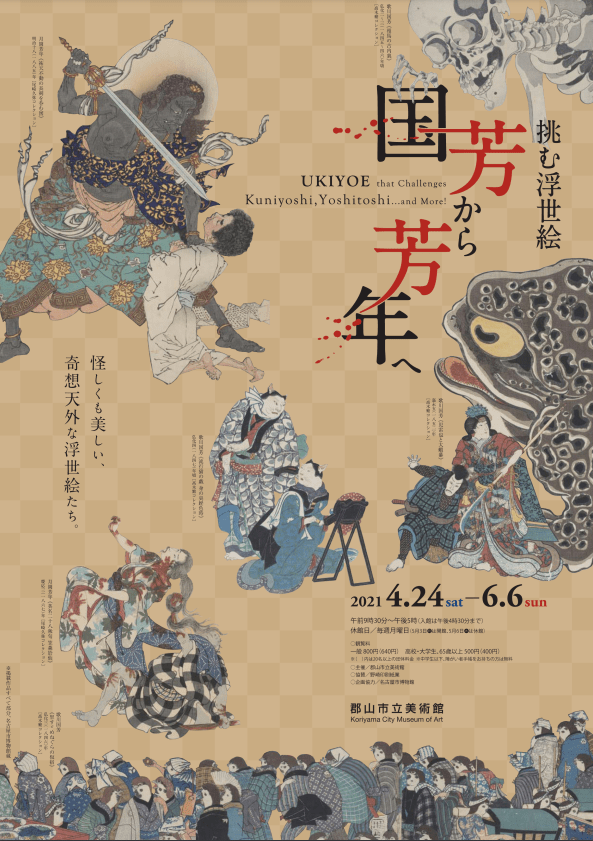
An exhibition of about 150 works some of the most striking and unique ukiyo-e in existence. Kuniyoshi was an ukiyo-e artist from the late Edo–early Meiji period who earned himself a reputation for his eccentric, often violent designs. Yoshitoshi, meanwhile, is widely recognized as the last great master of ukiyo-e. He was creating at a time when Japan was rapidly adopting Western-style printmaking and other technologies; his work represents a fight against the loss of traditional Japanese culture. And yet, although his medium may have been traditional, the design and content of his prints was incredibly innovative. This innovativeness has caused some collectors of traditional ukiyo-e to dismiss his work as being too experimental, yet his work remains well appreciated by more open-minded art enthusiasts.
Hours: 9:30–17:00
Closed days: Mondays (except May 3)
Admission: ¥800 adults, ¥500 seniors and students ages college to high school, children ages junior high & younger free
Details: city.koriyama.lg.jp
Location: Koriyama City Museum of Art (郡山市立美術館). Map here.
Access: 10 minutes by bus from Koriyama Station, followed by a 2-minute walk. From Koriyama Station Bus Stop 5 (5番乗り場), board bus bound for Bijutsukan via Tobu New Town (美術館経由東部ニュータウン). Alight at Koriyama Bijutsukan (郡山美術館) bus stop. Details and timetables here.
2. Nanyo Suwa Shrine Peony Festival Grand Finale
しゃくしゃく祭りグランドフィナーレ
Through June 11
Nanyo, Yamagata
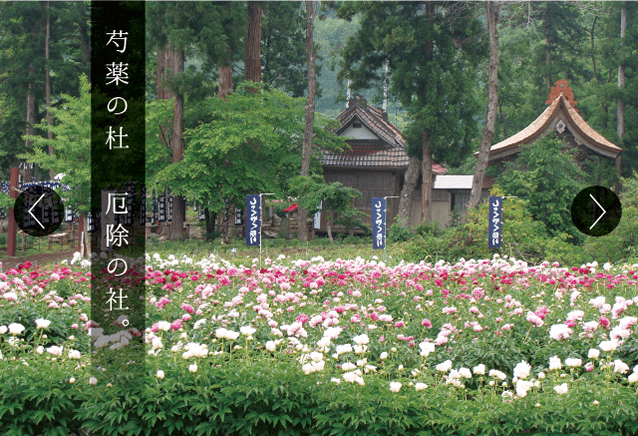
Nanyo Suwa Shrine is atmospheric countryside shrine boasting the largest peony cultivation area in Japan. The peony cultivation area occupies over half of the shrine’s 16,400 m2 grounds, and is home to over 100,000 peonies in 108 varieties. If you're interested in spotting all the different varieties, the shrine's website offers a free, easy-to-use pictoral guide.
Sadly, 2021 will be the final year for the Nanyo Suwa Shrine Peony Garden. So if it’s something you’ve been meaning to see but just haven’t gotten around to it, or something you’re hearing of for the first time just now and think it sounds wonderful, make this the year you go (because it’s the last chance you’ll have)!
Hours: 8:30–17:00
Closed days: None
Admission: ¥500 adults, children 18 & under free
Details & flower status: nanyo-syakuyaku.com
Location: Nanyo Suwa Shrine (南陽諏訪神社). Map here.
Access: 32-minute walk from Nakagawa Station
3. I remember: memories of the disaster and a parenting for 10 years
わたしは思い出ます:10年間の子育てからさぐる震災のかたち
Through June 13
Central Sendai
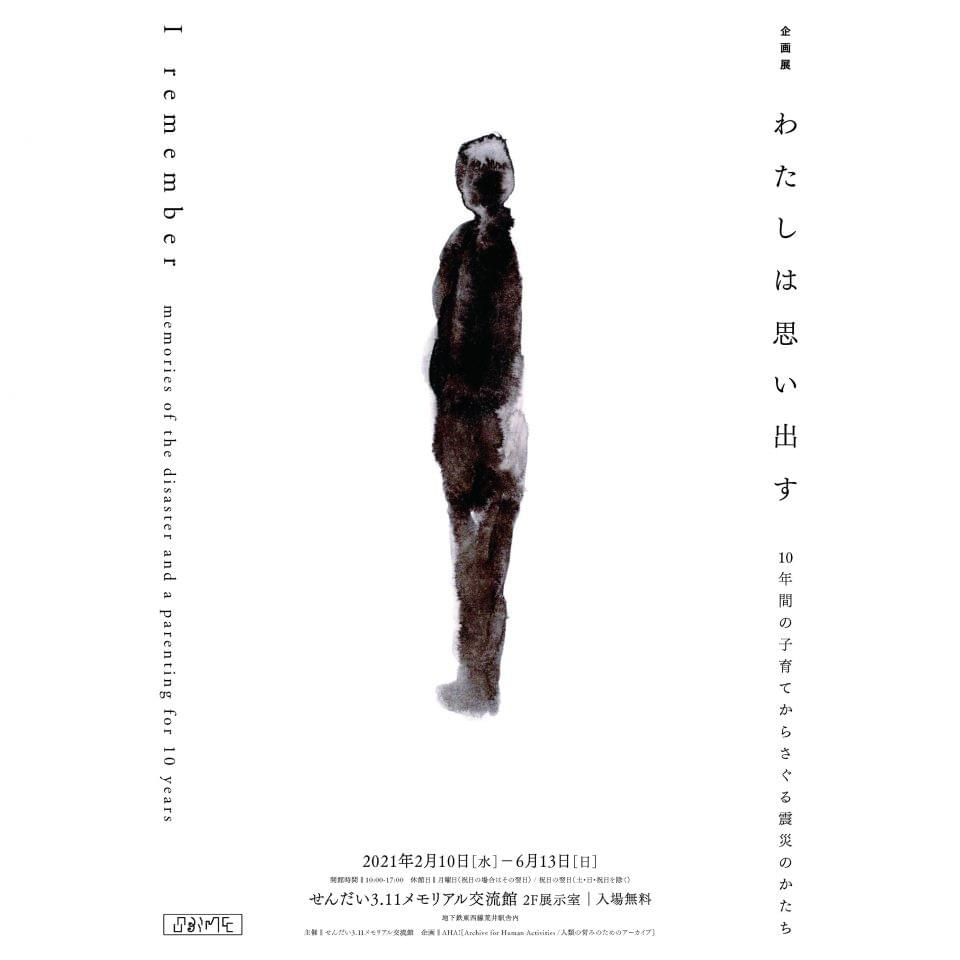
Shortly after giving birth, Sendai resident Kaori-san began keeping a diary, something she continued for ten years. The diary details her experiences raising her child, which happened to take place during the time of the Great East Japan Earthquake and its aftermath. Rereading passages from her journal, recalling those times, this exhibition recounts her daily life and experiences during those years.
Hours: 10:00–17:00
Closed days: Mondays (except public holidays) & the day after a public holiday (except Saturdays, Sundays, and other holidays).
Admission: Free
Languages: English. The Center itself has good English signage for nearly all of its permanent exhibits. Not sure about this particular exhibition since it's a temporary installation.
Exhibition details: sendai311-memorial.jp
Center details (English): visitmiyagi.com
Location: Second-floor gallery of the Sendai 3.11 Memorial Community Center (せんだい3.11メモリアル交流館 2F展示室). Map here.
Access: At Arai Station
4. Great Chilean earthquake tsunami exhibit
まちと記憶と映画館 ~1960年の記憶編~
Through June 13
Shiogama, Miyagi
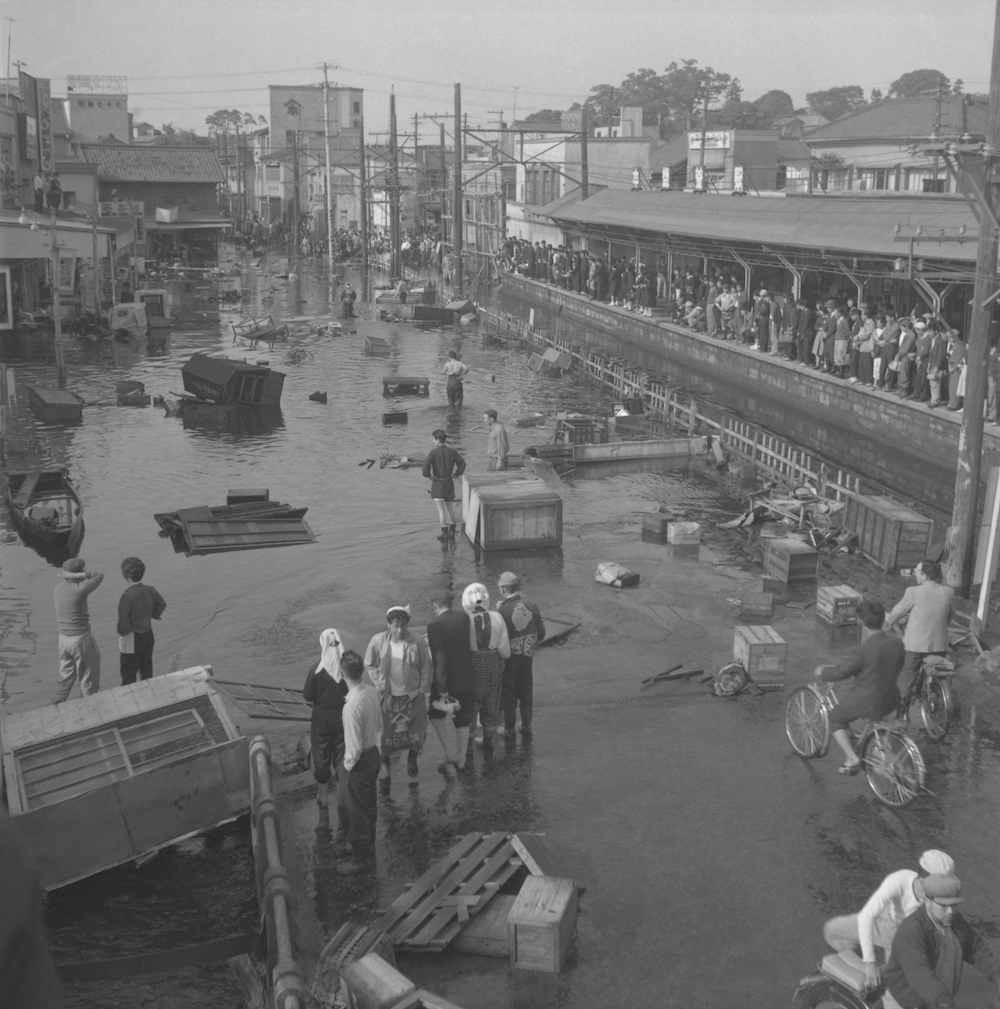
The 2011 Great East Japan Earthquake wasn’t the first time a huge tsunami has struck coastal Miyagi. Another of the most devastating in recent times was the 1960 tsunami triggered by the Great Chilean earthquake—the most powerful earthquake ever recorded. Learn about the impact this tsunami had on Japan and see restored images of the aftermath at an English-friendly exhibit happening now, titled In Retrospect: The tsunami triggered by the 1960 Valdiva Chile Earthquake/The day which forever changed Shiogama’s cityscape.
Hours: 10:00–17:00 (last entry 16:30)
Closed days: Mondays
Language: English OK
Admission: ¥200 adults, ¥100 high school students, children ages junior high and younger free
Exhibit details (English): sugimurajun.shiomo.jp
Museum details (English): visitmiyagi.com
Location: Shiogama City Sugimura Jun Museum of Art (塩釜市杉村惇美術館). Map here.
Access: 9-minute walk from Hon-Shiogama Station
5. 3000-Year-Old Walnut Basket Display
3000年前のクルミかご特別展示
Through June 13
Minamisoma, Fukushima
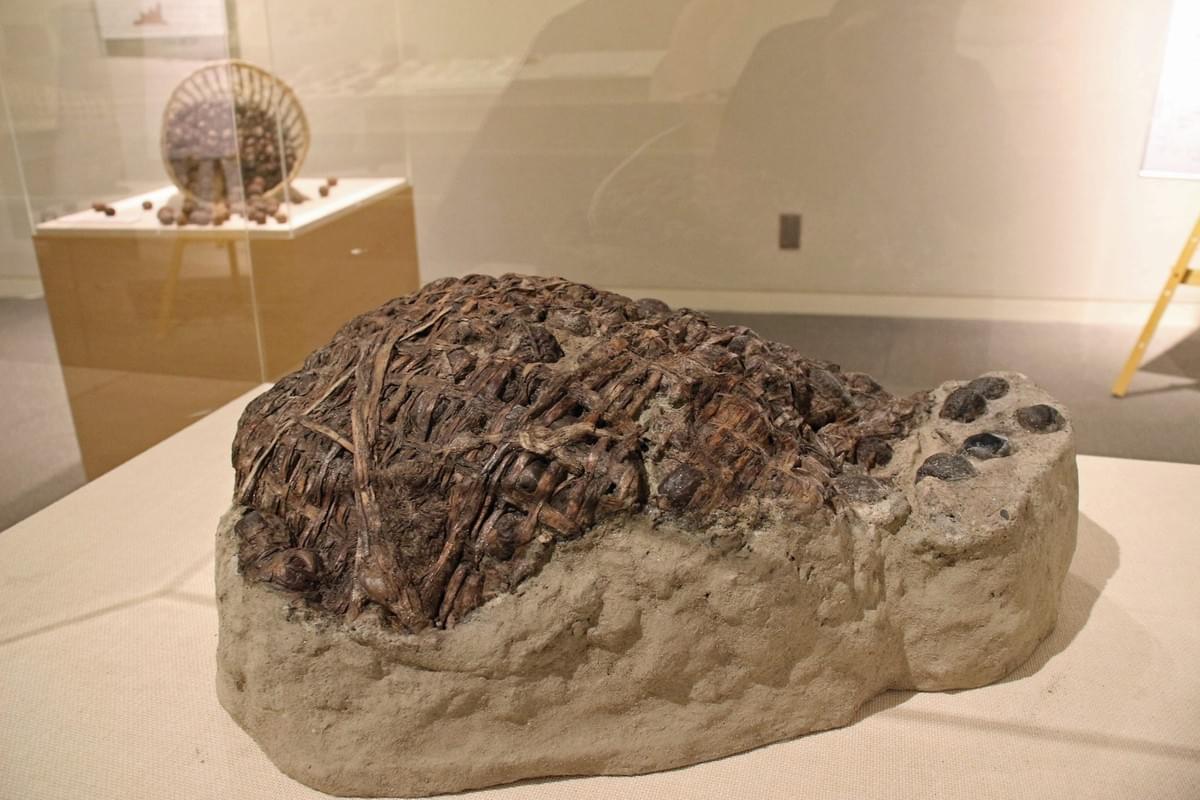
An astounding archeological find from the Jomon period, discovered just three years ago in Minamisoma! During the construction of a new school in Minamisoma, the Sagiuchi archeological site was excavated. There, sixteen baskets and basket-like objects were discovered, including one packed full of walnuts—the first such artifact to be found in all of Japan! This is the first time the walnut basket (and several others from the excavation) have been made available for public viewing.
Hours: 9:00–16:45 (last entry 16:00)
Closed days: Mondays (If Monday is a public holiday, the museum will be open Monday and closed the following day.), December 29–January 3
Admission: ¥300 adults, ¥200 high school students, ¥100 junior high and elementary school students
Language: English OK. See Details link for info on the basket in English
Details (English): city.minamisoma.lg.jp
Location: Minamisoma Museum (南相馬市博物館). Map here.
Access: 28-minute walk from Haranomachi Station
6. Entsuin Temple Rose Garden
円通院のバラ園
Through mid-June
Matsushima, Miyagi
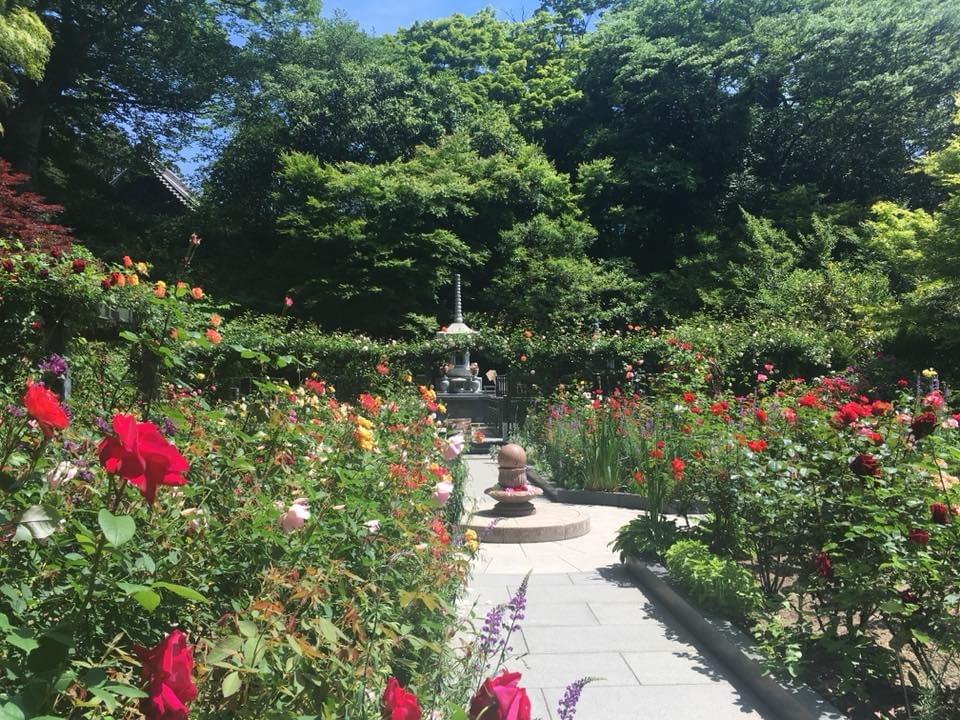
Entsuin is a peaceful temple known for its beautiful gardens. The temple grounds are most popular with sightseers during fall color season, but a more unusual highlight is the temple's rose garden, which comes into bloom every June. Why a garden full of Western flowers at a Buddhist temple? In honor of Masamune Date's Keicho mission to Rome, and the once-verboten Western imagery gracing the interior of the temple mausoleum.
Hours: 8:30–17:00 (April–late October)
- Closed days: None
- Admission: ¥300 adults, ¥150 high school students, ¥100 junior high & elementary school students
- Temple details (English): visitmiyagi.com
- Flower updates: entuuin.or.jp
- Location: Entsuin Temple (円通院). Map here.
- Access: 5-minute walk from Matsushimakaigan Station
7. Strawberry picking at Yamamoto Strawberry Farm
いちご狩り at 山元いちご農園
Through mid-June
Yamamoto, Miyagi
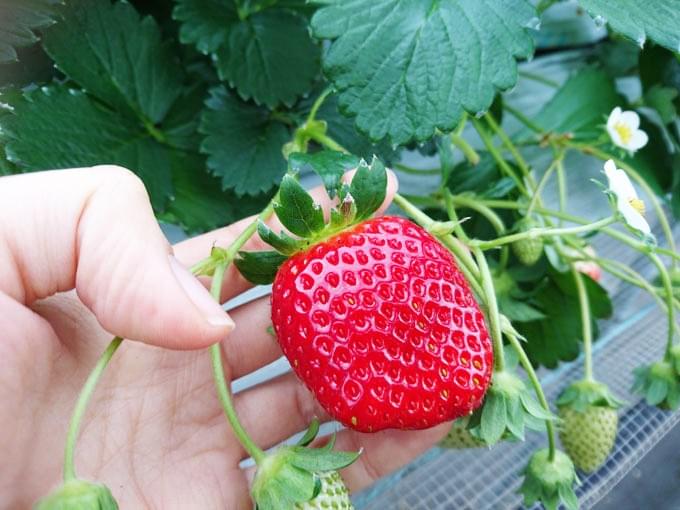
Yamamoto is Miyagi's number-one strawberry-growing area. Not only can you buy Yamamoto strawberrries, but you can also pick them yourself to gorge on right away! Yamamoto grows three varieties for picking: Nikonikoberry, Tochiotome, and Mouikko. In addition to strawberry picking, the farm also features a strawberry-themed cafe, winery, baumkuchen bakery, and omiyage shop.
Hours: 10:00–16:00
Closed days: None
Fee: Varies by date. Now until the end of the season, it's ¥1,300 people ages 7–65, ¥1,000 seniors 65+, ¥600 children ages 3–6, and children ages 2 & younger free
Reservations: None needed (except for large groups)
Official website: yamamoto-ichigo.com
Location: At Yamamoto Strawberry Farm (山元いちご農園). Map here.
Access: 15-minute walk from Yamashita Station
8. Marvel pop-up shop & photo ops
Marvelグッズショップ
Through June 20
Central Sendai

Marvel, juggernaut of pop culture worldwide, is gracing Sendai with a limited-time pop-up shop featuring limited-edition The Falcon and the Winter Soldier goods, plus photo-op setups specially designed with Marvel fans in mind.
Hours: 10:00–20:00 (~17:00 June 20)
Closed days: None
Details: sendai.parco.jp
Location: Sendai Parco Honkan 6F, Space 6 (仙台パルコ 本館 6F スペース6). Map here.
Access: Next door to Sendai Station
9. The Mieko Yokoi Collection: The Carvings of Fukushima Artist Gengen Sato & Fukushima Landscapes
横井美惠子コレクション─佐藤玄々の彫刻福島の作家・福島の風景
Through June 20
Fukushima City, Fukushima
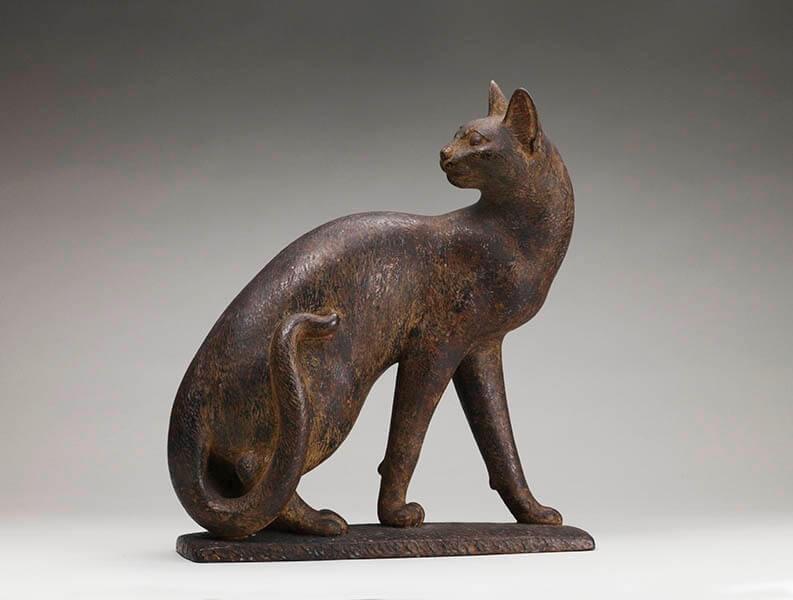
Gengen Sato (1888–1963) was a sculptor born in Soma, Fukushima. He studied under French sculptor Antoine Bourdelle, inspiring him to incorprate a modern perspective into his carvings, which were otherwise based in traditional Japanese woodcarving techniques. Though little known overseas, his work is considered representative of Japanese early modern sculpture.
Hours: 9:30–17:00 (Last entry 16:30)
Closed days: Mondays and the day following a public holiday (Saturdays & Sundays excepted). If Monday is a public holiday, then the museum will be open Monday.
Admission: Adults ¥280, children ages high school & younger free
Details: art-museum.fcs.ed.jp
Location: Fukushima Prefectural Museum of Art (福島県立美術館). Map here.
Access: 3-minute walk from Bijutsukantoshokan-mae Station
10. Denmark Design exhibition
デンマーク・デザイン
Through June 27
Tagajo, Miyagi

Scandinavian design is one of the hottest, most longstanding trends in interior design, and Denmark is the capital of the style. This exhibition showcases designs from the mid-century onward, considered the golden age of Danish design. It attempts to grasp the essence of Danish design and the influences which have shaped its evolution: the history, culture, and natural environment of Denmark.
Hours: 9:30–17:00 (last entry 16:30)
Admission: ¥1,200 adults, ¥1,100 seniors 65+, children ages elementary to high school ¥600
Language: The museum's permanent collection has English signage. Not sure about this exhibition, as it's a temporary installation.
Museum details (English): visitmiyagi.com
Exhibition details: thm.pref.miyagi.jp
Location: Tohoku History Museum (東北歴史博物館). Map here.
Access: At Kofuku-Tagajo Station
11. Higashizawa Rose Festival
東沢バラまつり
Through June 27
Murayama, Yamagata

The Higashizawa Rose Garden is considered one of Japan's best flower gardens, and has been designated one of Japan's Top 100 Aromascapes. See over 20,000 roses in 700 varieties! In addition to the roses, the festival also features drop-in flower-themed crafting workshops and themed foods, like rosehip noodles and rose-flavored ice cream.
Hours: 9:30–16:00
Admission: ¥600 adults, ¥300 children, children below school age free
Event details: city.murayama.lg.jp
Flower status: city.murayama.lg.jp
Location: Higashizawa Rose Park (東沢バラ園). Map here.
Access: 20-minute walk from Murayama Station
Access from Sendai: The fastest way to get to Murayama from Sendai is by highway bus, which takes about 90 minutes. At Sendai Station, board a Yamako (山交) Tokkyu 48 Liner (特急48ライナー) bound for Murayama (村山). Alight at Murayama Eki-mae (村山駅前). For timetable, see PDF at event details link.
12. The Onomatopoeia of Kusano Shimpei
草野心平のオノマトペ
Through June 27
Iwaki, Fukushima
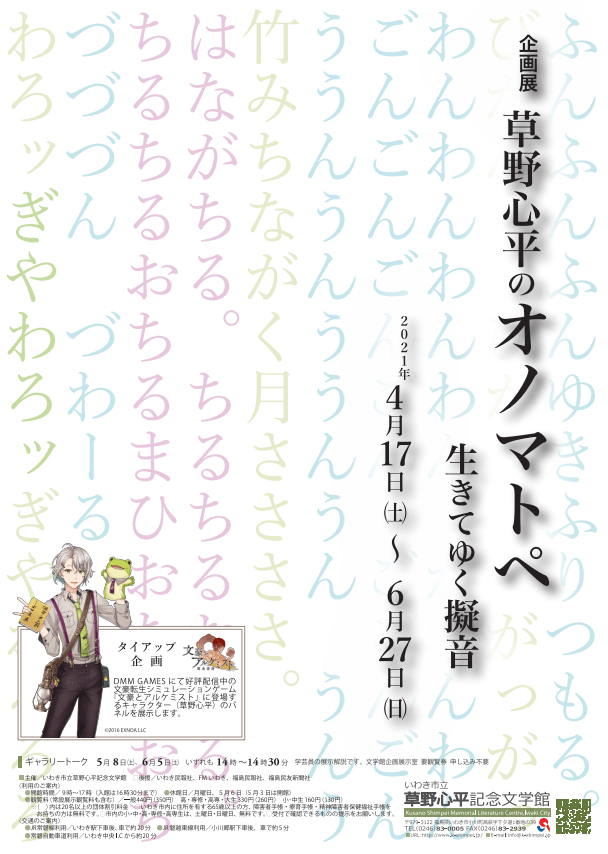
A special exhibition which explores the onomatopoeic devices used by poet and author Kusano Shimpei. Though Shimpei's works are in Japanese only, onomatopoeic devices are usually rendered in hiragana or katakana, making this an interesting and motivating exhibit for those learning to read Japanese.
Hours: 9:00–17:00 (last entry 16:30)
Closed days: Mondays
Admission: ¥440 adults, ¥330 college, vocational and high school students, ¥160 junior high and elementary school students
Event details (English): city.iwaki.lg.jp
Museum official website: k-shimpei.jp
Location: Kusano Shimpei Memorial Literature Centre (いわき市立草野心平記念文学館). Map here.
Access: 60-minute walk from Ogawago Station (taxis available by reservation).
13. Sanno Historical Park Iris Garden
山王史跡公園あやめ園
Through early July
Kurihara, Miyagi

The Sanno Historical Park Iris Garden was established as a specimen garden, home to historical and modern varieties. Observe how the process of selective breeding over the ages has altered the look of these ornamental flowers. Though the Iris Festival stage performances/food stalls/etc. have been suspended this year, the public is still invited to come enjoy the flowers.
Hours: 8:30–17:00
Closed days: None during iris season
Admission: Free
Details: kurihara-kb.net
Location: Sanno HIstorical Park Iris Garden (山王史跡公園あやめ園). Map here.
Access: 70 minutes by bus from Sendai Station, followed by a 5-minute walk. Board bus Ichihasama Line (一迫線) bus bound for Ichihasama Sogo Shisho-mae (一迫総合支所前), alight at Ichihasama Sogo Shisho-mae. Bus info here.
14. Zao Pension Village Open Gardens
蔵王ペンション村オープンガーデン
Through July 5
Kaminoyama, Yamagata

"Pensions" are small, homey inns, similar to Western bed-and-breakfast inns. The Zao Pension Village is a cluster of these inns located on the outskirts of Zao Onsen. Many of the pension owners are proud of the fine gardens they've cultivated. Though visitors are invited to explore the gardens any time of year, late spring through early summer is especially recommended, as many flowers are in bloom at that time.
Hours: 10:00–15:00
Admission: Free
Details (English): opengardenzao.com
Location: Zao Pension Village (蔵王ペンション村). Map here.
Access: 5 minutes by taxi from the Zao Onsen Bus Terminal (蔵王温泉バスターミナル). The bus terminal is about 40 minutes by bus from Yamagata Station. At Yamagata Ekimae Bus Stop 1 (山形駅前1番), board bus bound forZao Onsen (蔵王温泉). Alight at Zao Onsen Bus Terminal (蔵王温泉バスターミナル), the final stop. Timetables here.
15. Spring Valley Zipline-lite Tours
「ジップライン」ライトツアー
Through July 11
Izumi Ward, Sendai

Spring Valley, best known as a ski resort, offers thrills out in nature during green season too. One such adventure is its zipline course, which boasts seven different zipline runs. The Lite Tour, offered through July 11, covers three of the tamer runs. The Mountain Course, which opens later in summer, covers the wilder rides.
Hours: Tours start weekends & holidays at 10:00, 11:00, 13:00 14:00, & 15:00
Fee: ¥2,500
Language: English OK
Reservations: Required, can book online
Details & booking (English): sendai-experience.com
Location: Spring Valley Izumi Kogen (スプリングバレー泉高原). Map here.
Access (weekends & holidays): 50 minutes by bus from Izumi-Chuo Station (泉中央駅). Board city bus 10 bound for Izumi Kogen Spring Valley (泉高原スプリングバレー). Alight at Izumi Kogen Spring Valley, the final stop. Timetables here.
Access (weekdays): 50 minutes by bus from Izumi-Chuo Station (泉中央駅), followed by a 50-minute walk. Board city bus 10 bound for Izumidake Shizen Fureaikan (泉岳自然ふれあい館) at Izumi-Chuo Station. Alight at Izumidake Shizen Fureaikan, the final stop. Timetables here.
16. Osaki Hachimangu Shrine Chinowa
大崎八幡宮の茅の輪
Through mid-July
Central Sendai

Osaki Hachimangu Shrine holds an oharae-shiki purification ceremony every year on June 30. Unfortunately, due to concern over coronavirus, the ceremony will not be open to the public this year. As a consolation, the shrine has put together a short video of the ceremony and has shared it on YouTube.
The shrine has set up their oharae-shiki chinowa as in regular years though, and invites the public to come perform the chinowa-kuguri ritual freely on their own any time while the chinowa is up. What's a chinowa and chinowa-kuguri? A chinowa (茅の輪) is a large ring made of bundled aquatic plants. In chinowa-kuguri, worshippers pass through the chinowa in a left-to-right figure-eight pattern, a simple ritual said to purify the spirit completely of all the unintentional corruption accumulated over the past six months.
Hours: 9:00–17:00
Admission: Free
Shrine details (English): osakihachimangu.com
Location: Osaki Hachimangu Shrine (大崎八幡宮). Map here.
Access by rail: A 15-minute walk from Kunimi or Tohoku Fukushi Daigaku-mae Stations
Access by Loople Sendai Bus: 43 minutes from Sendai Station. Board Loople Sendai Bus at Sendai Station West Exit Bus Pool platform 16. Alight at Loople bus stop #12, Osaki Hachimangu Shrine. Bus details and timetable here (English).
17. Kalmia Matsuri
カルミア祭り
June 5–20
Ichinoseki, Iwate
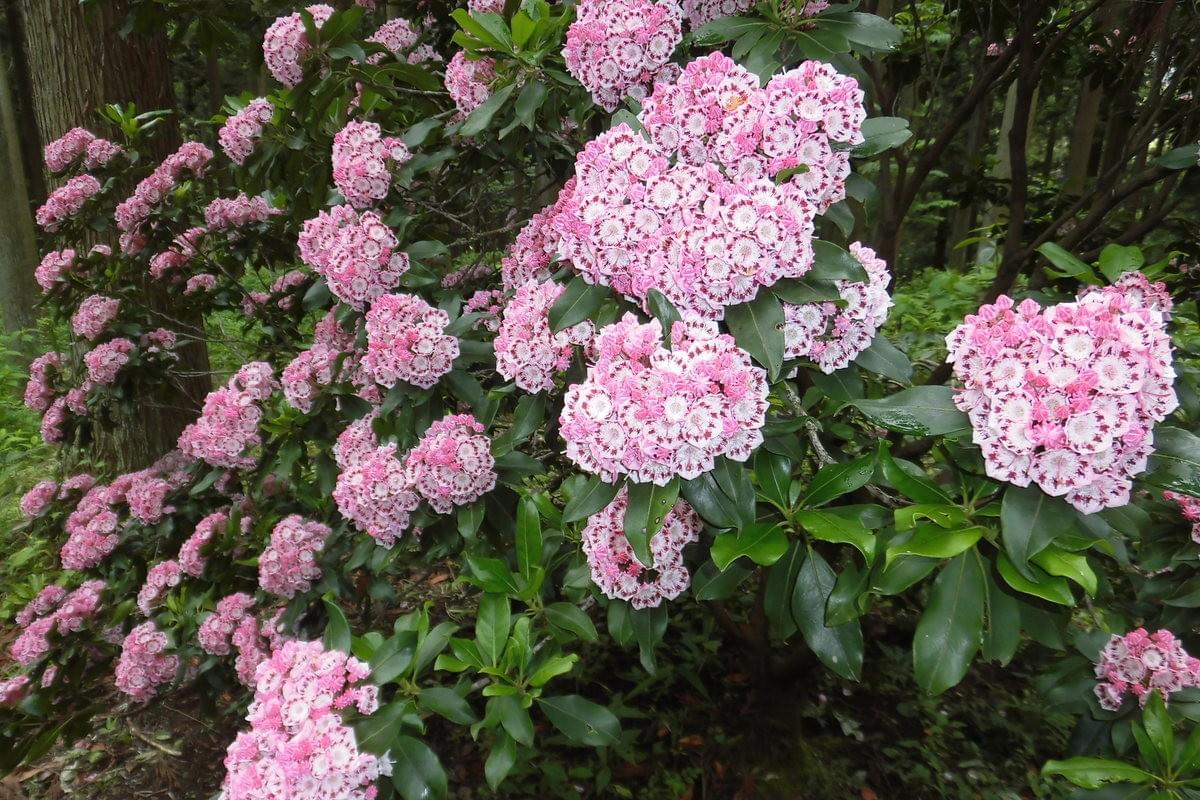
The only kalmia festival in Japan! Kalmia, known as mountain laurel or calico bush in English, is prized as an ornamental plant. If you want to see it in large numbers, the sprawling Michinoku Ajisai-en is the best place in Japan to do so.
Hours: 9:00–17:00 (last entry 16:30)
Admission: ¥800 adults, children ages elementary to junior high ¥200, children below school age free
Details: ichitabi.jp
Location: Michinoku Ajisai-en (みちのくあじさい園). Map here.
Access: About 30 minutes by bus from Ichinoseki Station (一関駅), followed by a 15-minute walk.
From the Bus Stop 7 in front of Ichinoseki Station, board a Geibikei Line (げいび渓線) bus bound for Geibikei (げいび渓) or Surisawa Ekimae (摺沢駅前). Alight at Mizukami (水上). Timetable here.
18. Yakurai Garden Rose & Herb Fair
やくらいガーデンローズ&ハーブフェア
June 5–July 4
Kami, Miyagi

Yakurai Garden is one of the most photogenic gardens in Tohoku, with scenery that changes not only by the season, but by the month! The garden is best known for its immaculate rainbow-like fields of colorful flowers planted in deliberate patterns, which bloom in spring and autumn. In summer, the garden takes on a more natural look, with bigger, wilder flowers and lush green.
If you're a fan of gardens and flowers, it might be worth buying a yearly passport. The passport costs ¥2,000 which allows free entry to the garden all year.
Hours: 10:00–17:00
Closed days: None during fair
Admission: Adults ¥700, children ages junior high & younger ¥200
Event details: miyagi-kankou.or.jp
Yakurai Garden official website: yakurai-garden.com
Location: Yakurai Garden (やくらいガーデン). Map here.
19. Opening day of the Miyagi 3.11 Tsunami Disaster Memorial Museum
みやぎ東日本大震災津波伝承館の開館日
June 6
Ishinomaki, Miyagi
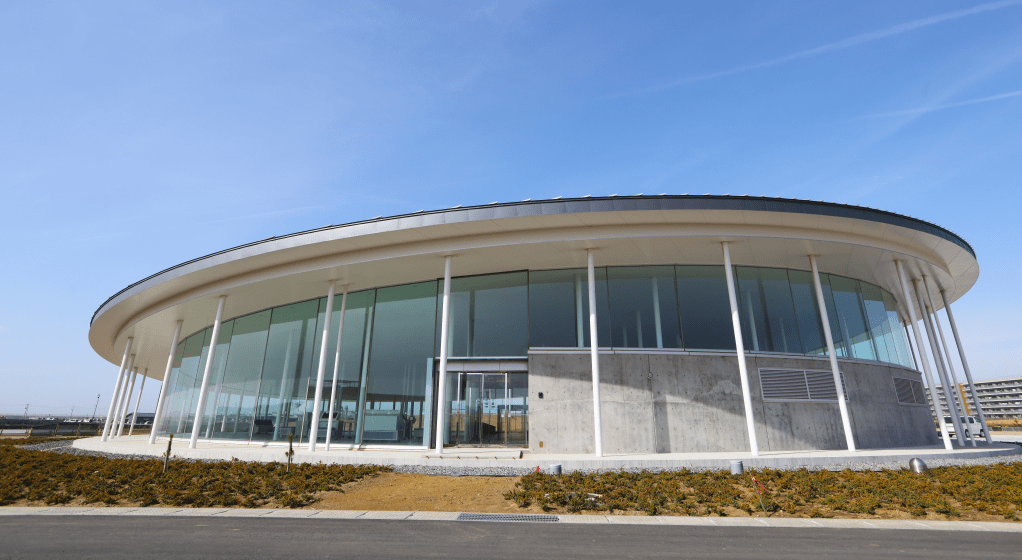
The Miyagi 3.11 Tsunami Disaster Memorial Museum is an impressive new facility dedicated to educating visitors not just about the events of the 2011 Great East Japan Earthquake, but also about earthquakes, tsunamis, and disaster preparedness in general. The building was designed by Nomura Kougei, the same architecture firm responsible for such impressive structures as the Shiseido Global Innovation Center, the Kyoto Railway Museum, and Moomin Valley Park. Virtually all of the museum content, including videos and survivor accounts, is accompanied by high-quality English translations. In addition to the English, the content of all main exhibits has also been translated into Korean and Chinese. Whether or not you come out for opening day, a visit to this new museum is a must!
Hours: 15:00~ on opening day, 9:00–17:00 thereafter
Closed days: Mondays & the New Year's holiday period. If Monday is a public holiday, the museum will be open Monday and closed the following day.
Languages: English, limited Chinese and Korean
Admission: Free
Museum details: pref.miyagi.jp
Opening day details: pref.miyagi.jp
Location: Miyagi 3.11 Tsunami Disaster Memorial Museum (みやぎ東日本大震災津波伝承館). Map here.
Access: A 32-minute walk, or 12 minutes by bus from Ishinomaki Station (石巻駅). At Ishinomaki Station bus platform 2, board a Yamashita Kadonowaki Line (山下門脇線) bus. Alight at Kadonowaki 4-Chome (門脇四丁目) bus stop. Timetable here (weekdays) and here (weekends & holidays).
20. Do-re-mi-fa So-ra Mame Matsuri
ドレミファそら豆まつり
June 11–13
Murata, Miyagi
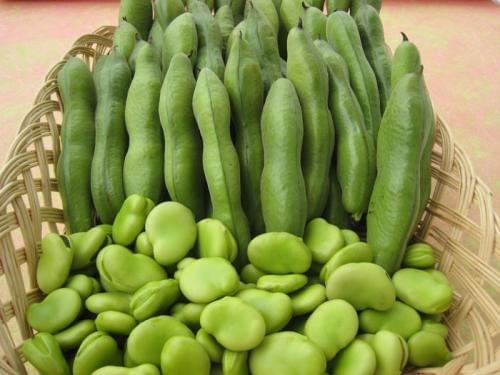
Fava beans are a little-known local product of Murata and a coveted item for those of us from abroad who grew up on them. With their harvest season so short, the surest opportunity to purchase fresh ones at bargain prices is at this small festival. The main attraction is the all-you-can-stuff fava bean sale: Purchase a bag for a flat fee, then stuff it full of as many fava pods as you can. No matter how many you manage to stuff in your bag, the price stays the same! In addition to the limited-time festivities, the restaurant at the Michi no Eki hosting the event serves fava bean udon year-round as a signature dish.
Hours: 9:00–15:00
Admission: Free
Event details: muratmachi.info
Location: Michi no Eki Murata Local Products Exchange Center (道の駅「村田」物産交流センター). Map here.
Access: 40 minutes by highway bus from Sendai Station, followed by an 8-minute walk. From Sendai Station Bus Stop 34, board bus bound for Murata-machi・Zao-machi・Togatta (村田町・蔵王町・遠刈田). Alight at Murata-machi Yakuba (村田町役場) or Satellite Miyagi (サテライト宮城) bus stop. Timetables here.
21. Lily Festival at Iide Dondendaira Lily Garden
いいでどんでん平ゆり園のゆりまつり
June 12–July 18
Iide, Yamagata
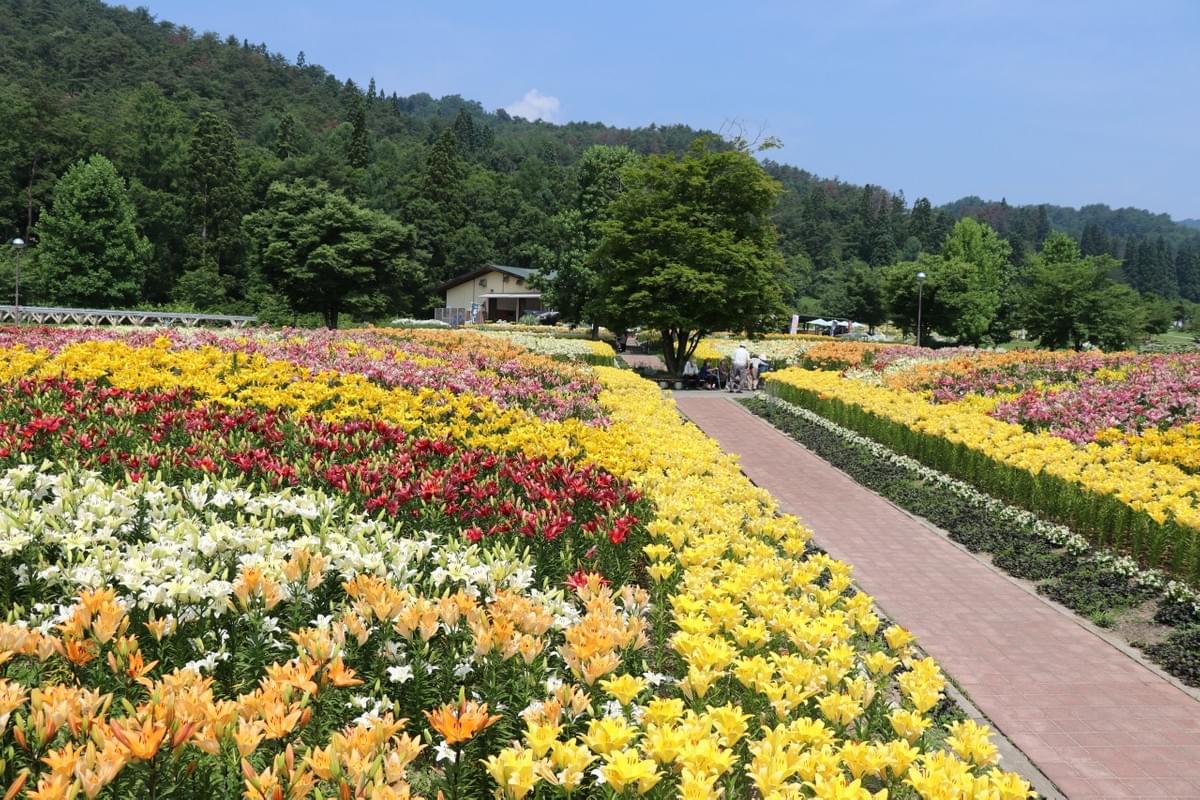
This seven-hectare park is one of eastern Japan's largest lily gardens, home to over 500,000 lilies in countless varieties. In addition to viewing the flowers, visitors can also purchase lily bulbs for growing at home or enjoy eating them as a dessert, in the park's signature "lily soft" ice cream.
Hours: 9:00–17:00
Admission: ¥700 individuals ages 16 & up, children ages junior high & younger free
Official website: dondendaira.com
Location: Iide Dondendaira Lily Garden (いいでどんでん平ゆり園). Map here.
Access: 35-minute walk from Hagyu Station
22. Minamikata Hanashobu Iris Festival
みなみかた花菖蒲まつり

Outside of Japan, hanashobu is known simply as "Japanese iris". This variety of iris is admired for the way its sword-shaped leaves point sharply upwards. Perhaps because of that, the hanashobu is seen as symbolizing the warrior spirit. The Minamikata Hanashobu no Sato Park has a spacious iris garden 50,000 square-meters in area, where you can enjoy a panoramic view of thousands of these warrior flowers.
Hours: 9:00–16:00
Admission: Free
Details: miyagi-kankou.or.jp
Location: Minamikata Hanashobu no Sato Park (みなみかた花菖蒲の郷公園). Map here.
Access: 13 minutes by bus from Semine Station (瀬峰駅), followed by a 15-minute walk. Board a Minamikata Line (南方線) bus bound for Sanuma (佐沼), alight at Takaishi (高石) bus stop. Timetables here.
23. Shibata Hydrangea Festival
しばた紫陽花まつり
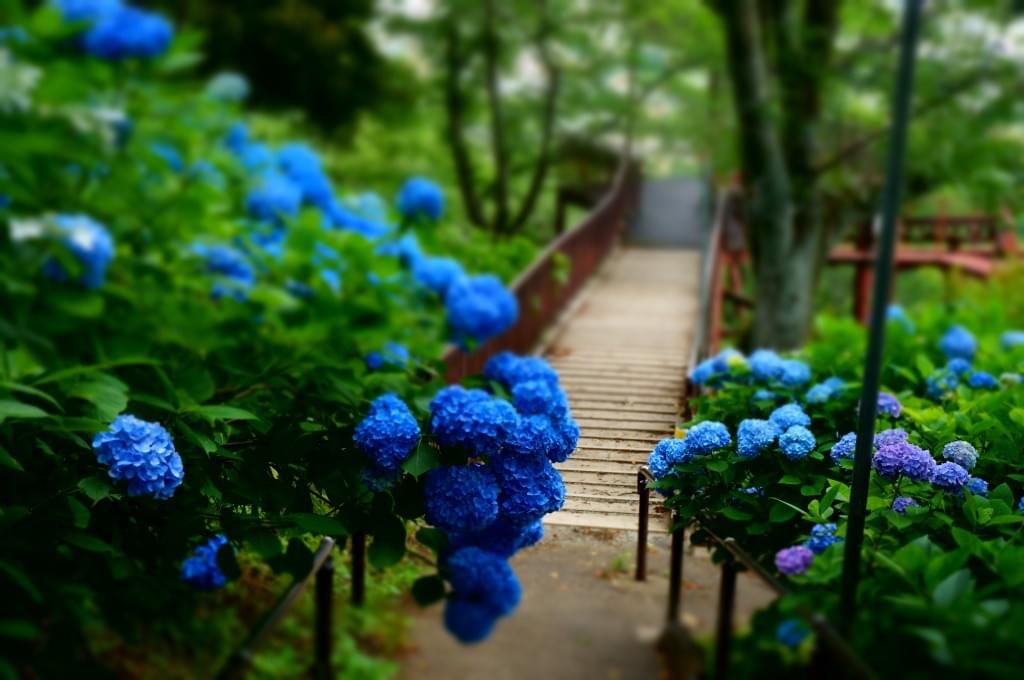
Funaoka Castle Site Park, most famous for its cherry blossoms, is also home to a handsome colony of hydrangeas. In early summer, the parks walking paths come alive with over 2,500 hydrangeas in bloom.
Hours: Always open
Admission: Free
Details: miyagi-kankou.or.jp
Location: Funaoka Castle Site Park (船岡城址公園). Map here.
Access: 15-minute walk from Funaoka Station
24. Baikamo in Shiroishi
白石の梅花藻
Mid-June to late July
Shiroishi, Miyagi
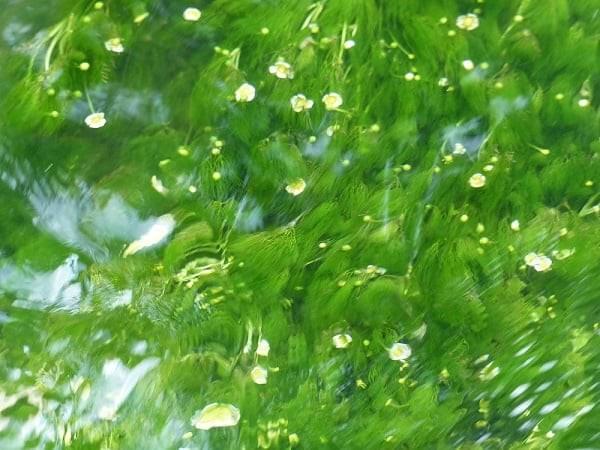
Baikamo (梅花藻), sometimes called "water buttercup" in English, is delicate aquatic flower native to Japan, which grows only in limpid streams with a water temperature below 15 degrees Celsius. One such place is the canal in front of the Shiroishi Bukeyashiki (Samurai Residence). Between these rare flowers and this real bukeyashiki, the summer atmosphere here is nearly the same as it was in the days of the samurai.
Hours (canal): Always open
Hours (samurai residence): 9:00–17:00 (last entry 30 minutes prior to closing)
Closed days: None during baikamo season
Admisson (canal): Free
Admission (samurai residence): ¥200 adults, ¥100 children ages elementary to high school, children ages kindergarten & younger free
Details (English): visitmiyagi.com. For baikamo updates, see the @shroishijo.shiroishi Facebook Page.
Location: The canal in front of the Shiroishi Bukeyashiki (武家屋敷). Map here.
Access: 15-minute walk from Shiroishi Station
25. Esperanto walk-in lessons at Birdo Flugas
エスペラント講座
June 21 (& the third Monday of every month)
Shiogama, Miyagi

Esperanto is the world's most widely spoken constructed auxiliary language. In simpler terms, it's a made-up language designed with predictable grammar and vocabulary that make it easy to learn, especially for speakers of Indo-European languages. Come study and practice it in a casual, friendly setting with like-minded learners. Though the lessons are called "walk-in," reservations are actually required ("walk-in" here just refers to the fact that you don't have to come every week, or for a set number of lessons). The venue is the hip and cosmopolitan art gallery Birdo Flugas.
Time: 13:00–14:30
Fee: ¥500
Language: Esperanto OK
Reservations: Required, see Details link for booking info
Details: birdoflugas.com
Location: Birdo Flugas (ビルド・フルーガス). Map here.
Access: 10-minute walk from Hon-Shiogama Station
26. Michinoku Hydrangea Park
みちのくあじさい園
June 26–July 25
Ichinoseki, Iwate
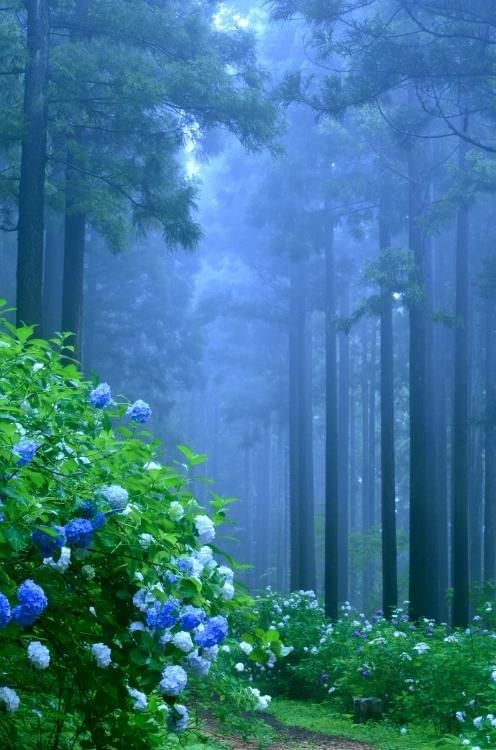
The Michinoku Hydrangea Garden is one of Japan's Japan's biggest and best, with the garden forming the underbrush of a cedar forest. A two-kilometer long walking trail winds through the forest, along which visitors can see around 30,000 hydrangea in about 300 different varieties.
Hours: 9:00–17:00 (last entry 16:30)
Admission: Adults ¥1,000, children ages elementary through junior high ¥200, children ages kindergarten & younger free
Details: ichitabi.jp
Location: Michinoku Hydrangea Garden (みちのくあじさい園). Map here.
Access: About 30 minutes by bus from Ichinoseki Station, followed by a 15-minute walk.
From the Bus Stop 7 in front of Ichinoseki Station (一関駅), board a Geibikei Line (げいび渓線) bus bound for Geibikei (げいび渓) or Surisawa Ekimae (摺沢駅前). Alight at Mizukami (水上). Timetable here.
27. Hydrangeas at Shifukuji Temple
資福寺のアジサイ
Late June–early July
Central Sendai

This quaint temple in Sendai's Kitayama neighborhood is typically a quiet, seldom visited spot. But come late June, in-the-know locals flock here to enjoy the large hydrangea bushes in bloom. Particularly at this time of year, the temple grounds at are said to look like "heaven's doorstep."
Time: Always open
Admission: Free
Details (English): visitmiyagi.com
Location: Shifukuji Temple (資福寺). Map here.
Access by rail: 15-minute walk from Kita-Sendai Station.
28. Fireflies at Masubuchi
鱒渕川のゲンジボタル
Late June–early July
Tome, Miyagi
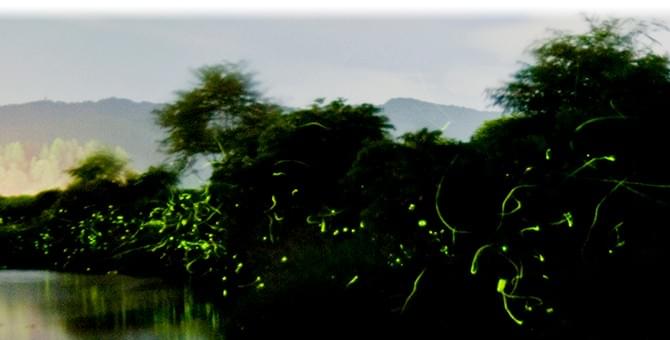
A 1.5-kilometer stretch of river home to one of the most impressive firefly habitats in Japan. So impressive, in fact, that the area has been designated a National Natural Monument! Masubuchi is known for its Genji fireflies, a large firefly species found only in Japan.
Hours: Always open, but come in the evening for best firefly viewing
Closed days: None
Admission: Free
Details: miyagi-yonekawa.com
Location: Along the Masubuchi River (鱒渕川) between the Genji Firefly Koryukan (源氏ボタル交流館) to Masubuichi Kani Post Office (鱒渕簡易郵便局). Map here.
29. Day lilies at Oguninuma Marsh
雄国沼湿原のニッコウキスゲ
Late June–early July
Kitashiobara, Fukushima

Designated a National Natural Monument, Oguninuma is a wetland famous for the yellow alpine lilies that carpet the marsh in summer. An elevated walking path allows visitors to stroll the wetland without damaging the plant life. For panoramic views of the marsh, hike the 5-kilometer (round trip) trail to the top of Mount Oguni.
Hours: Always open
Admission: Free
Details: urabandai-inf.com
Location: Oguninuma Marsh (雄国沼). Map here.
Access: Most years during day lily season, shuttle buses are available from from Kitakata Station (喜多方駅). Whether or not the shuttle buses will run this year has yet to be announced. For updates, and info on previous years' bus service, see here.
30. Hydrangeas at Korinji Temple
高林寺のアジサイ
Late June to mid-July
Nihonmatsu, Fukushima
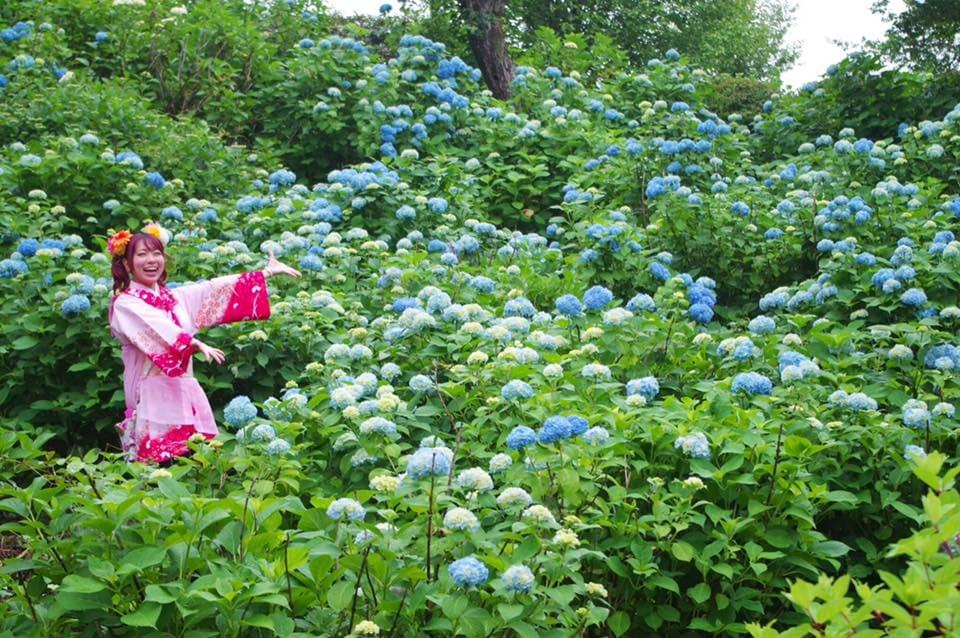
Though officially named Korinji, this temple is known as Ajisai-dera (lit. "Hydrangea Temple") by locals thanks to its hydrangea-filled grounds. Though the temple isn't well-known outside of the local area, it's been recommended to us by a local garden enthusiast as one of the best places to see hydrangea in all of Japan!
Hours: Always open
Closed days: None
Admission: Free
Details: nihonmatsu-kanko.jp
Location: Gohozan Korinji (護法山 高林寺). Map here.
Access: 28 minutes from Nihonmatsu Station by bus, followed by a 15-minute walk. At the Nihonmatsu Station Iriguchi (二本松駅入口) bus stop, board bus bound for Towa Shogakko (東和小学校). Alight at Ota Wakamiya (太田若宮) bus stop. Timetable here.

